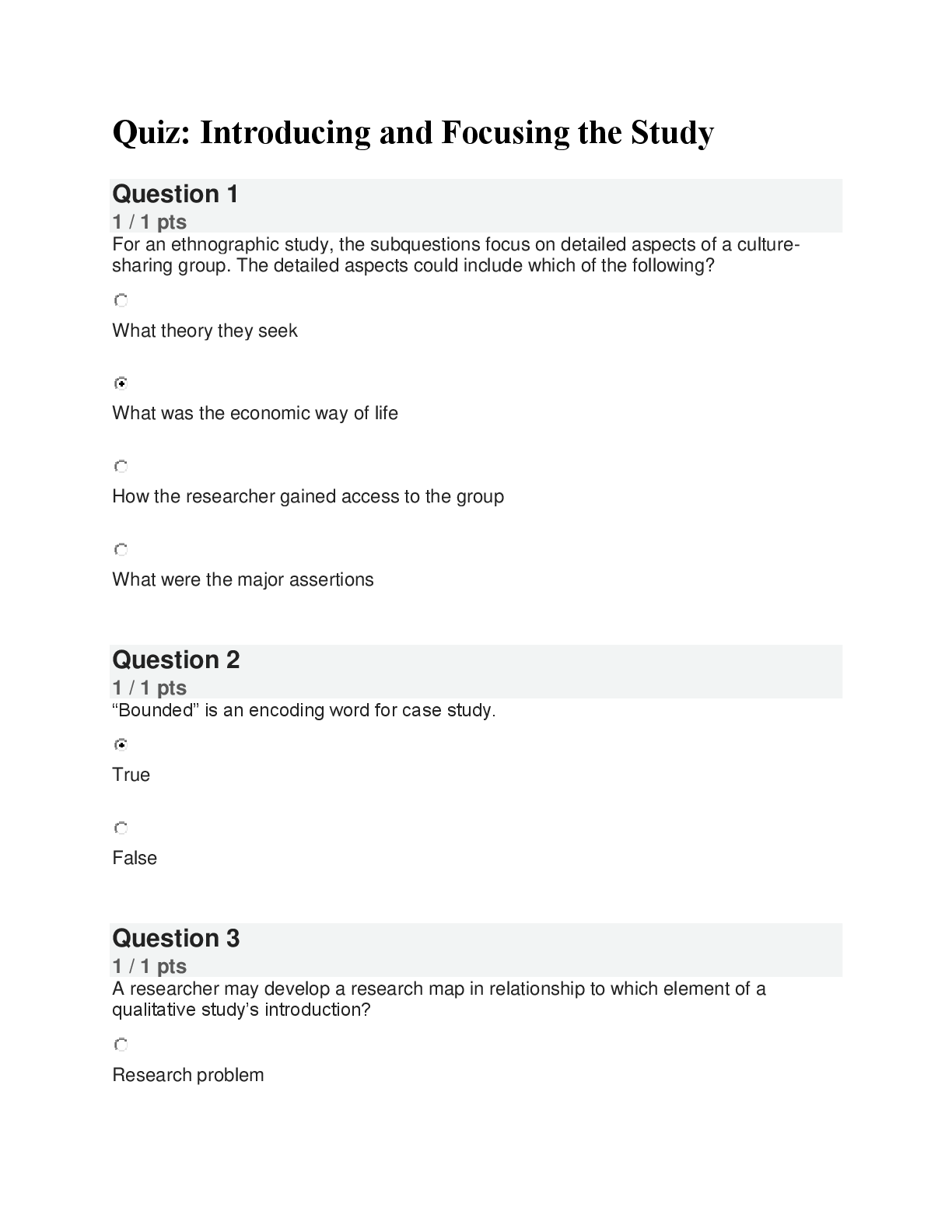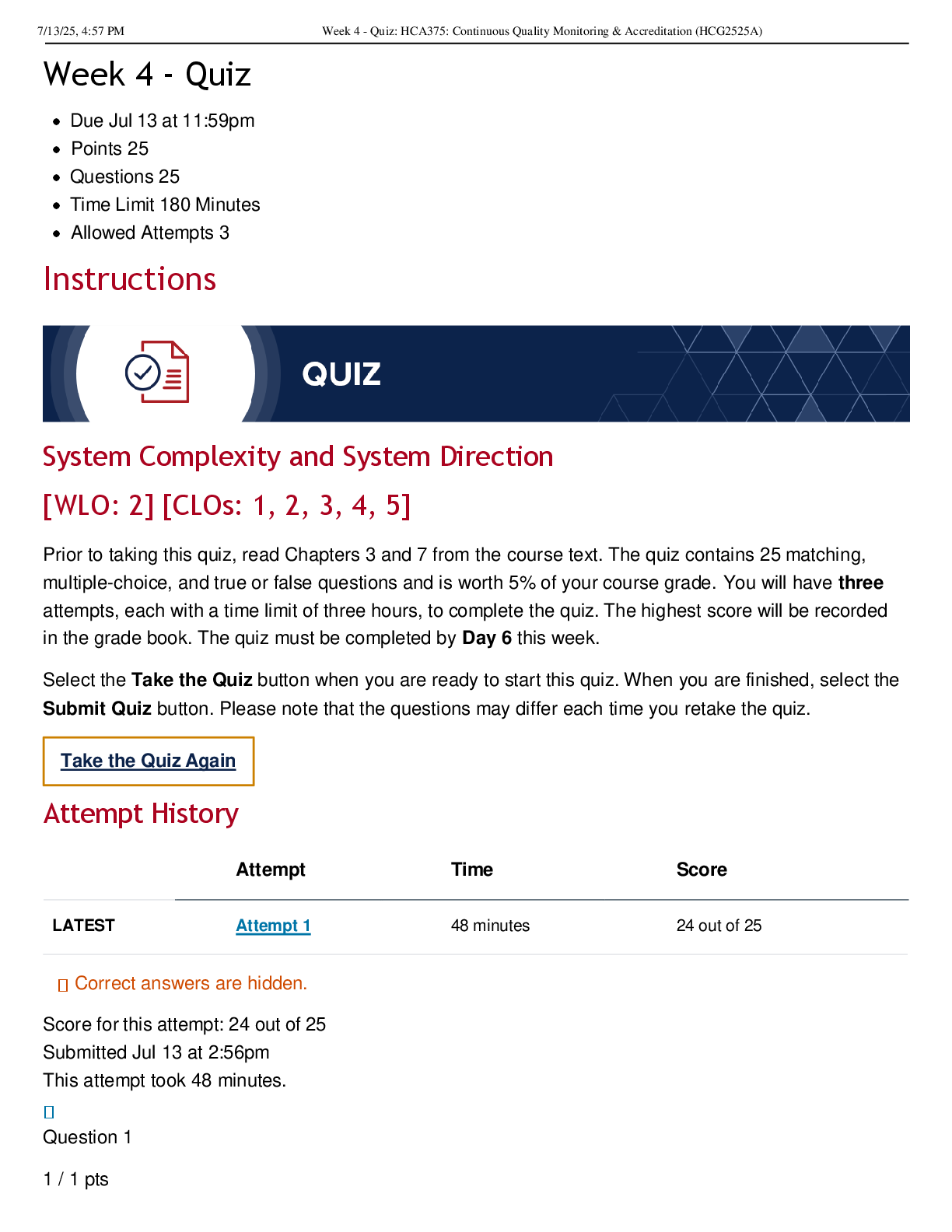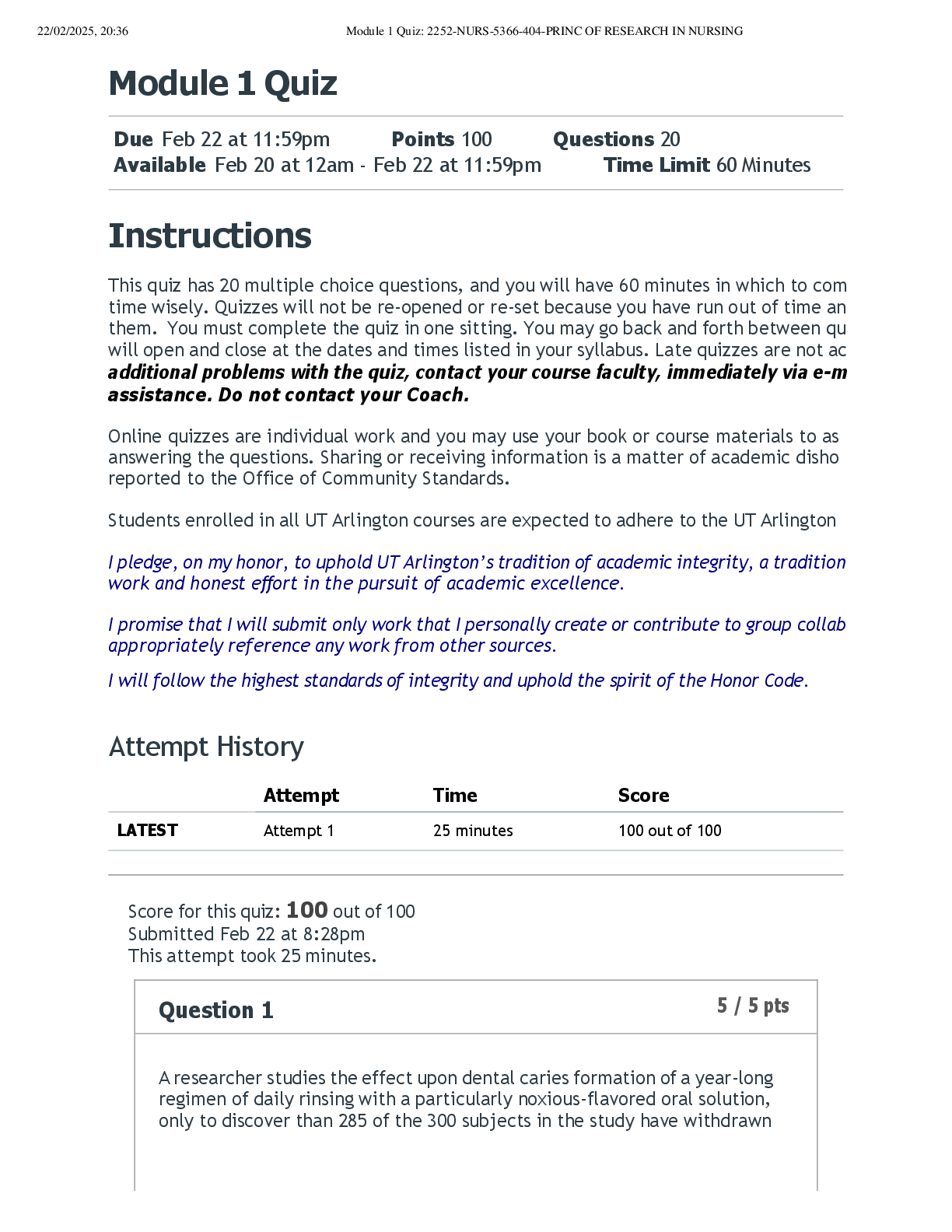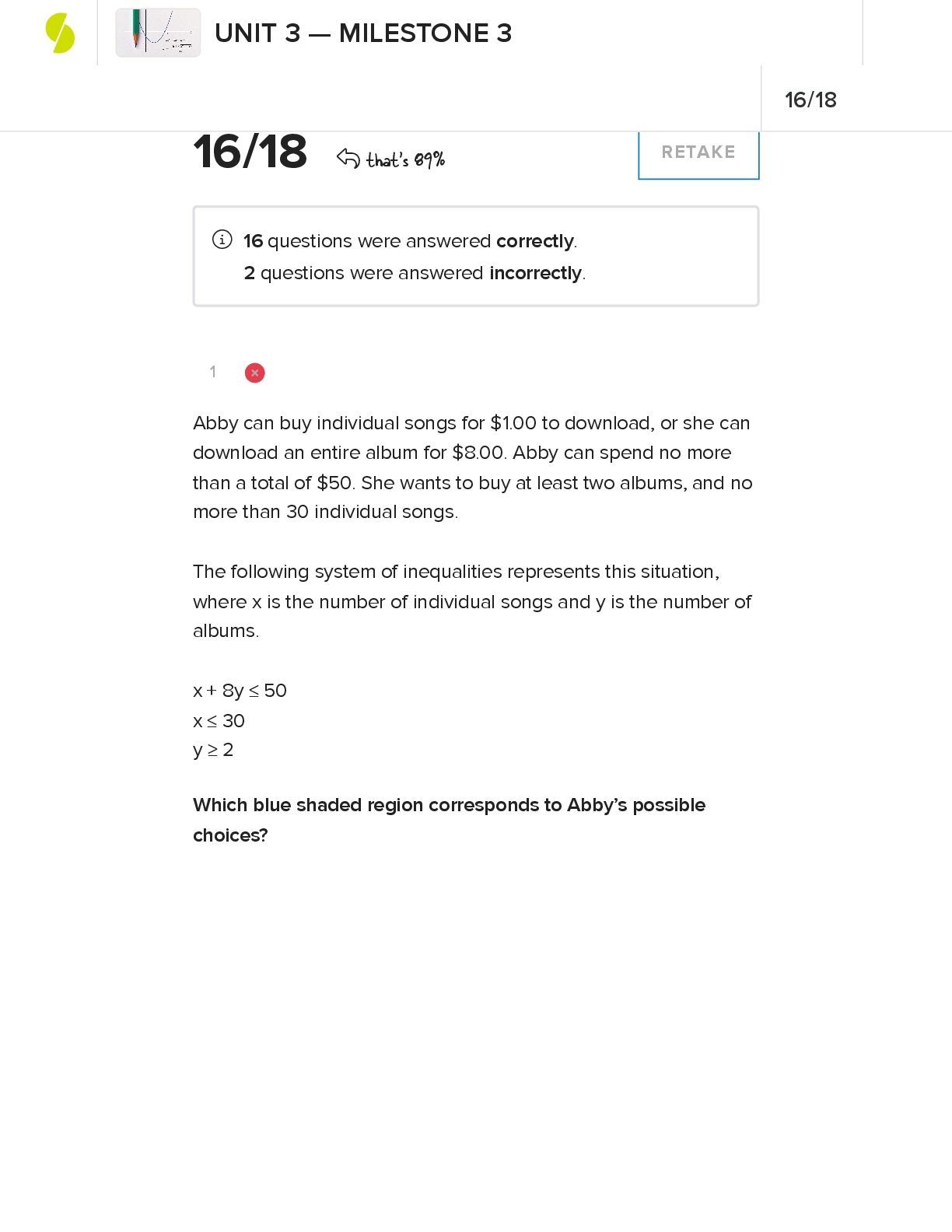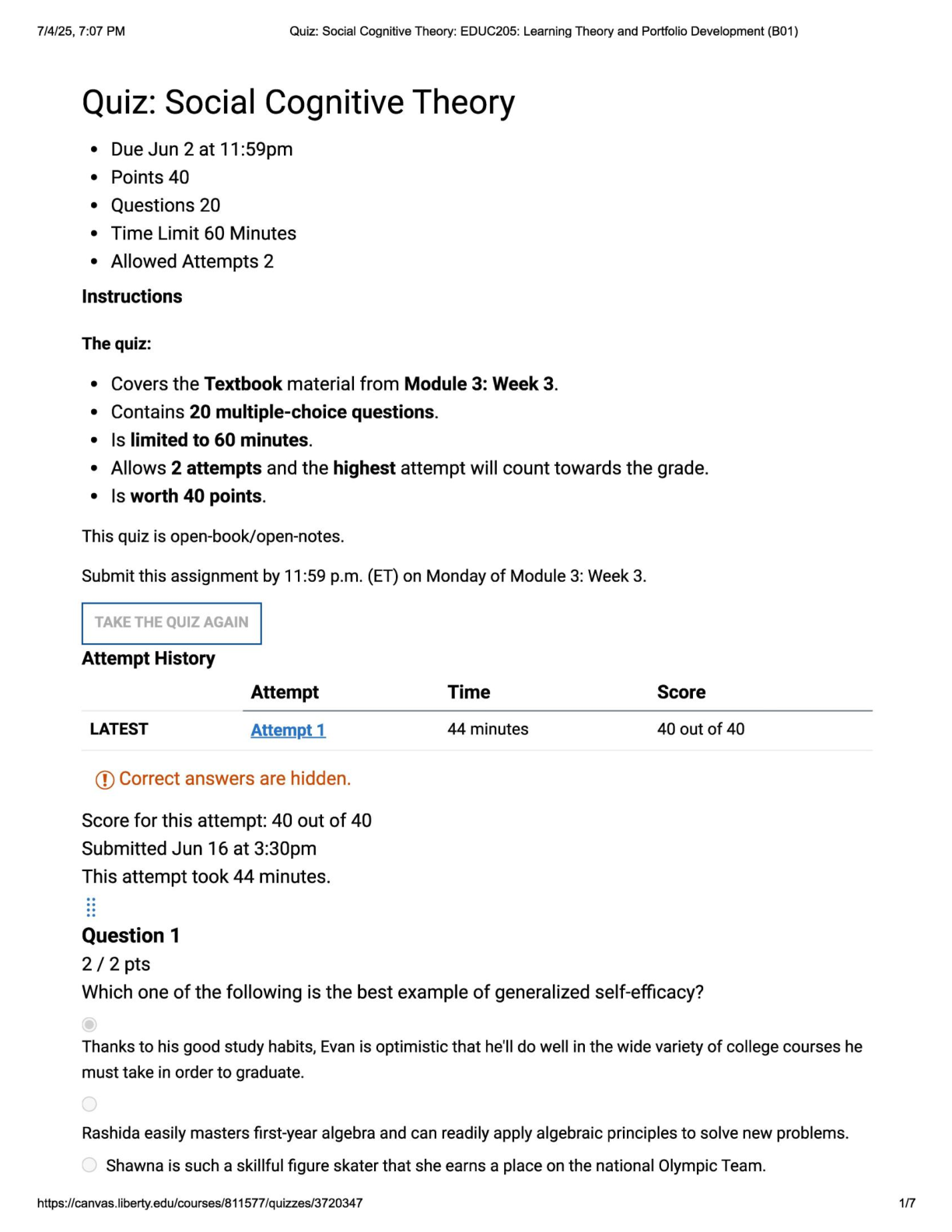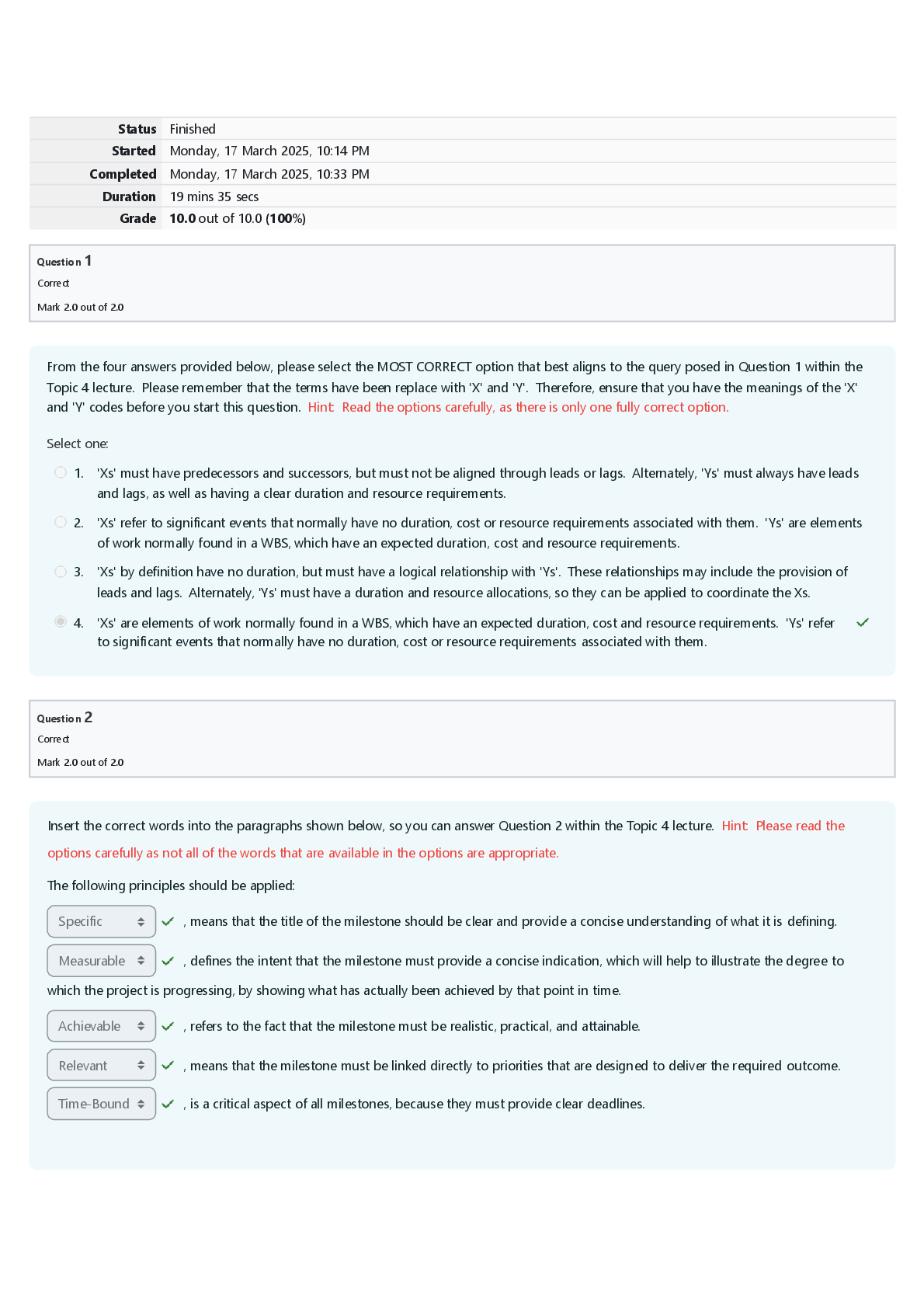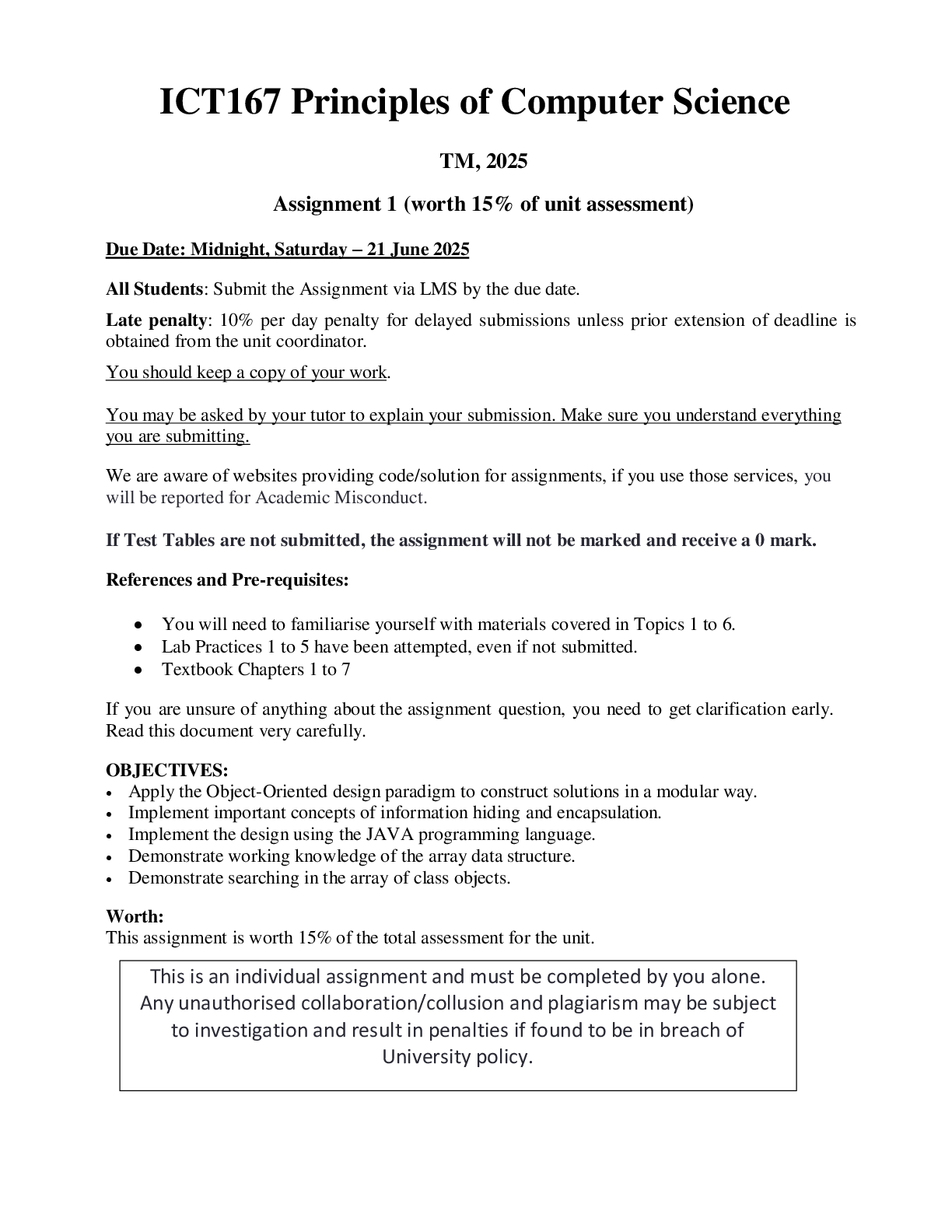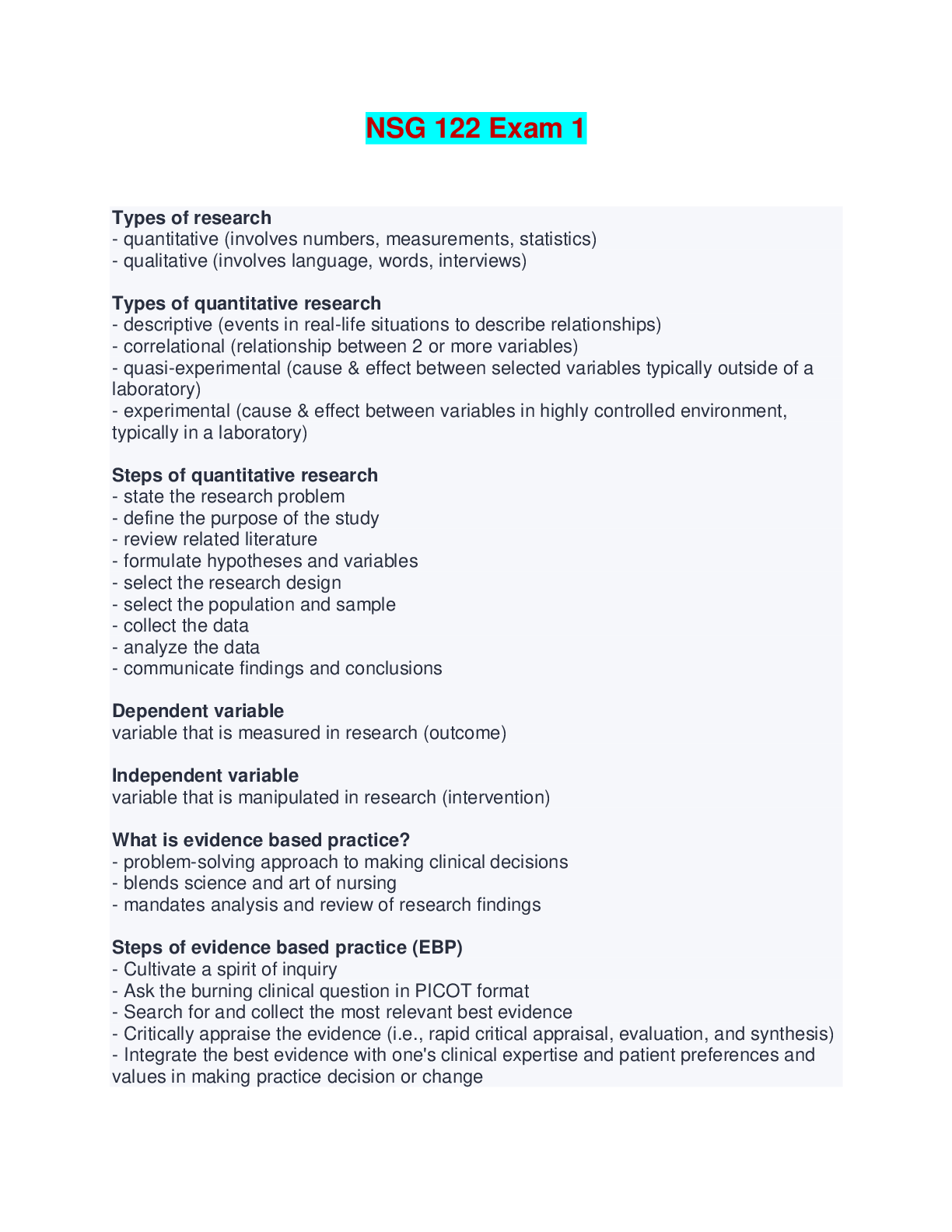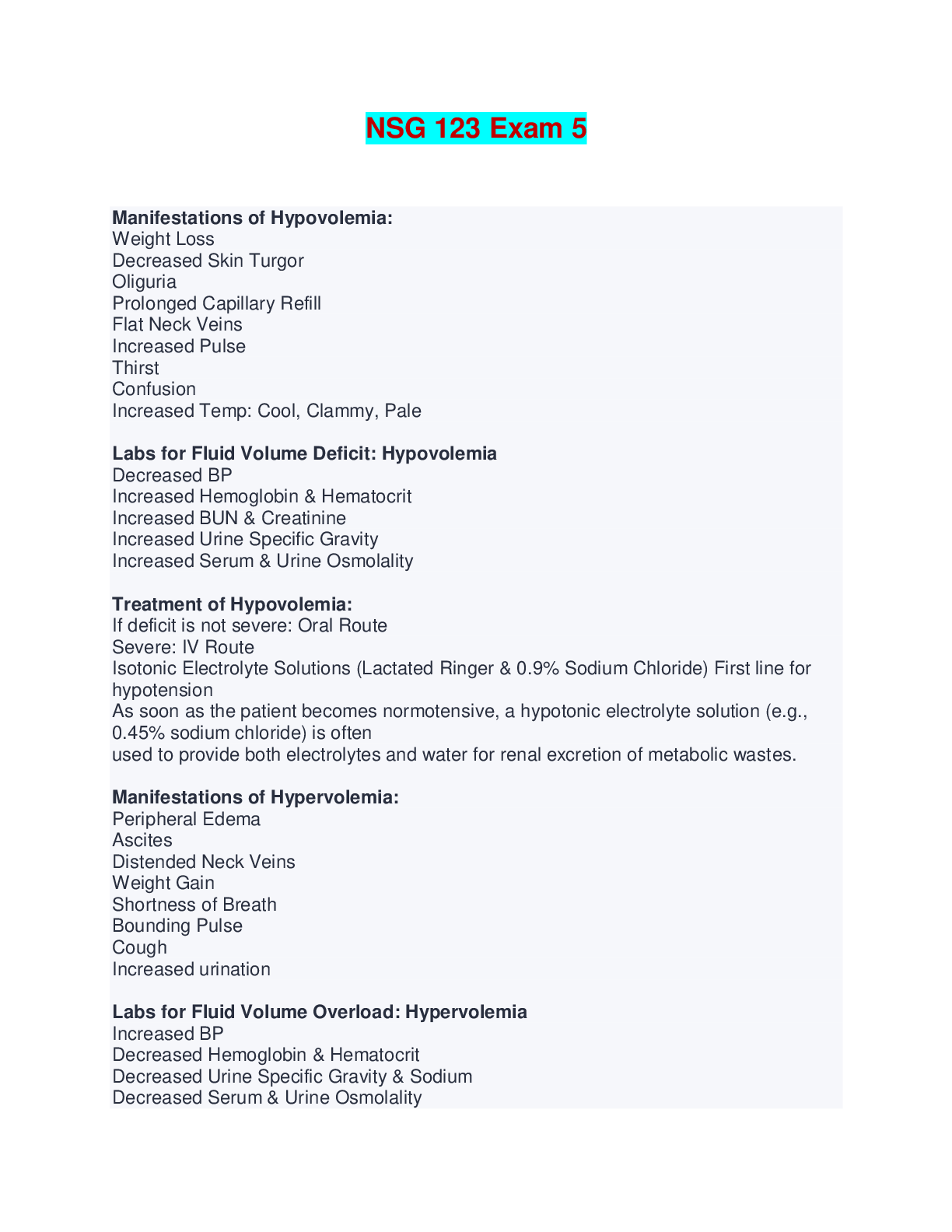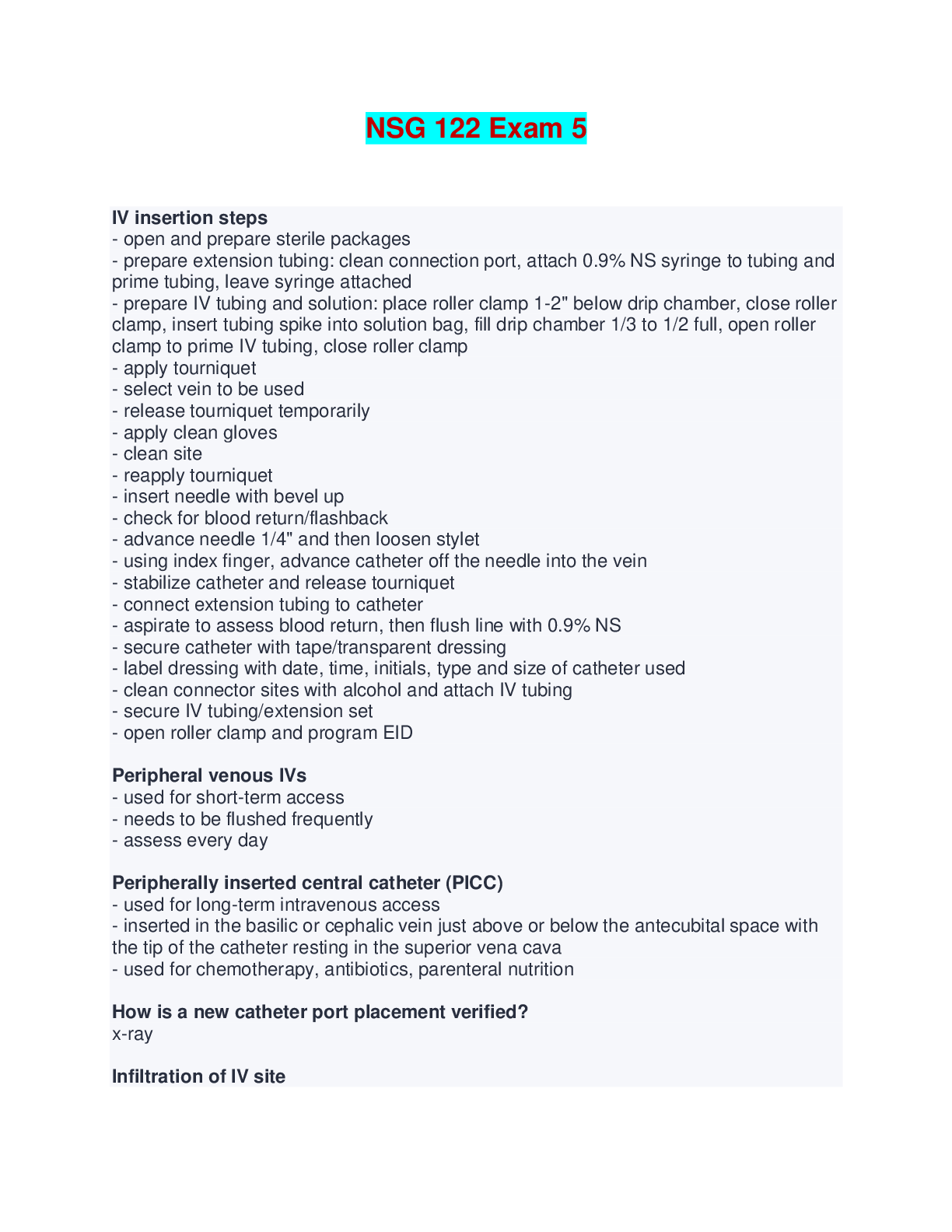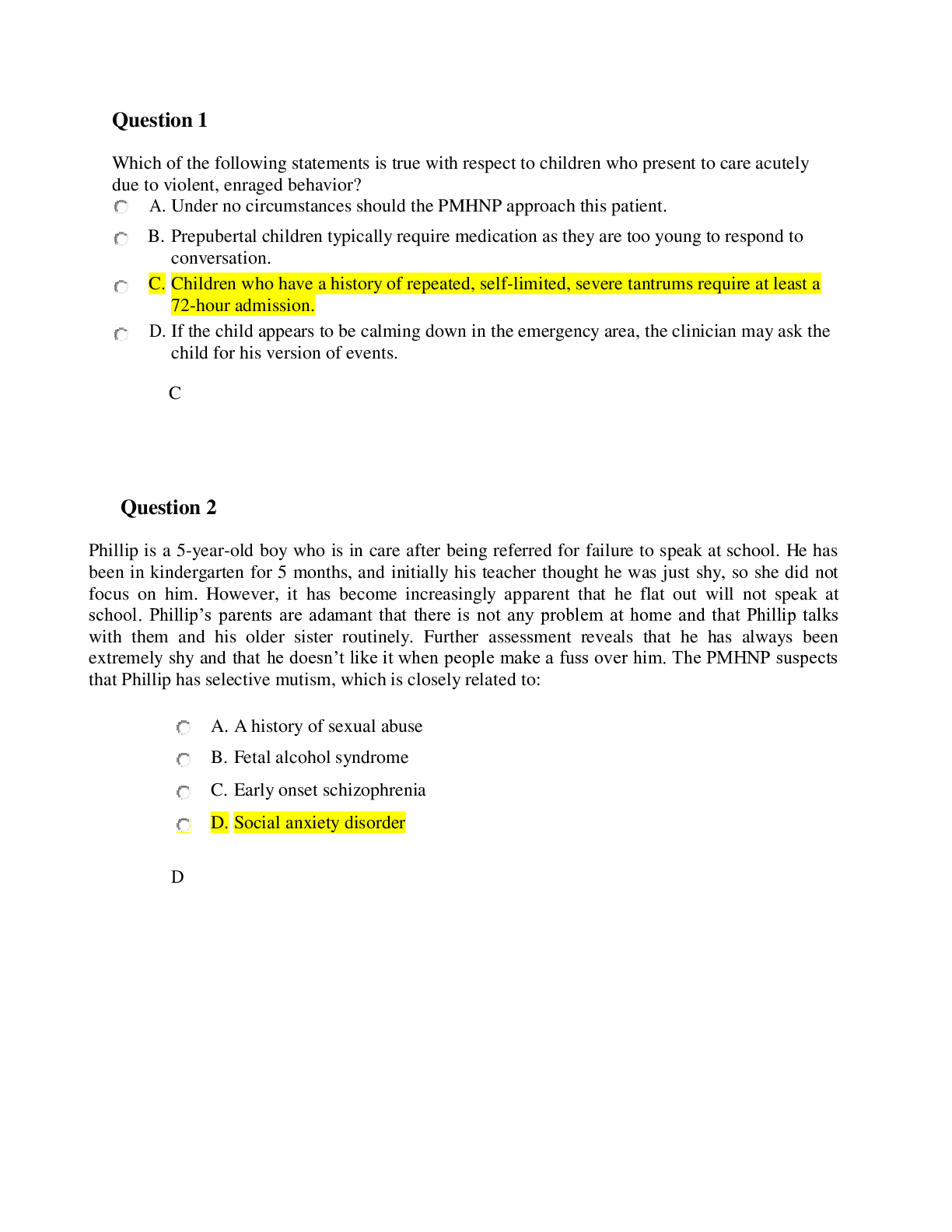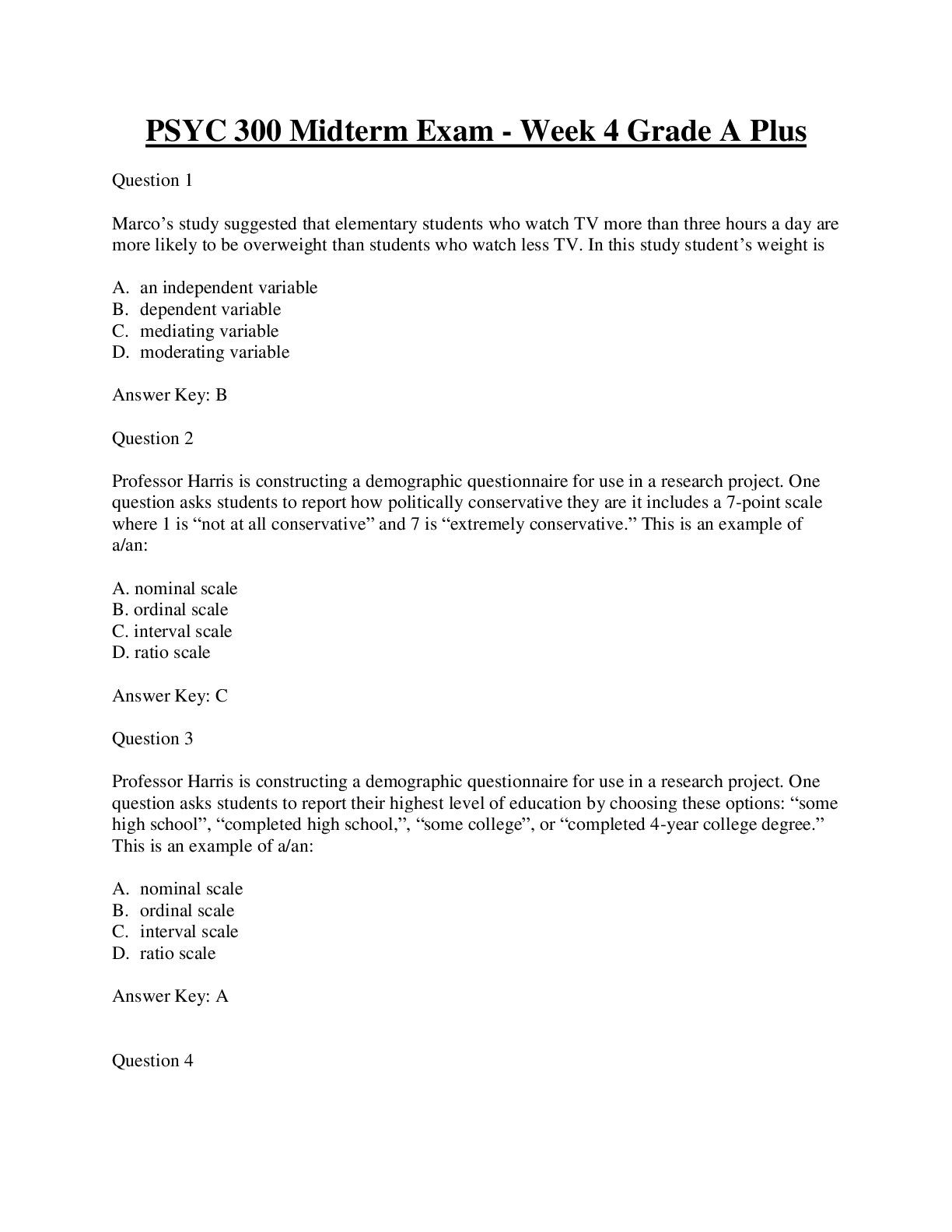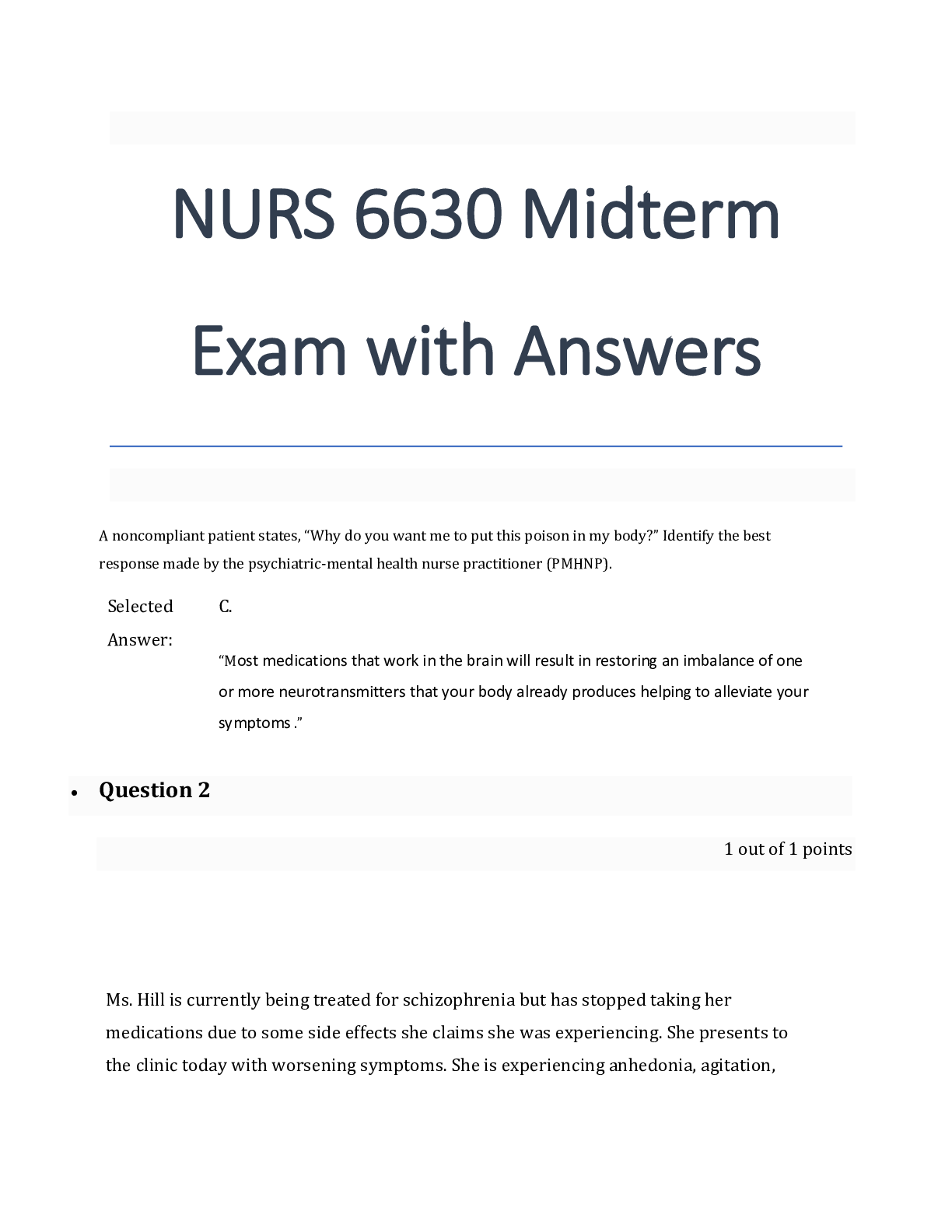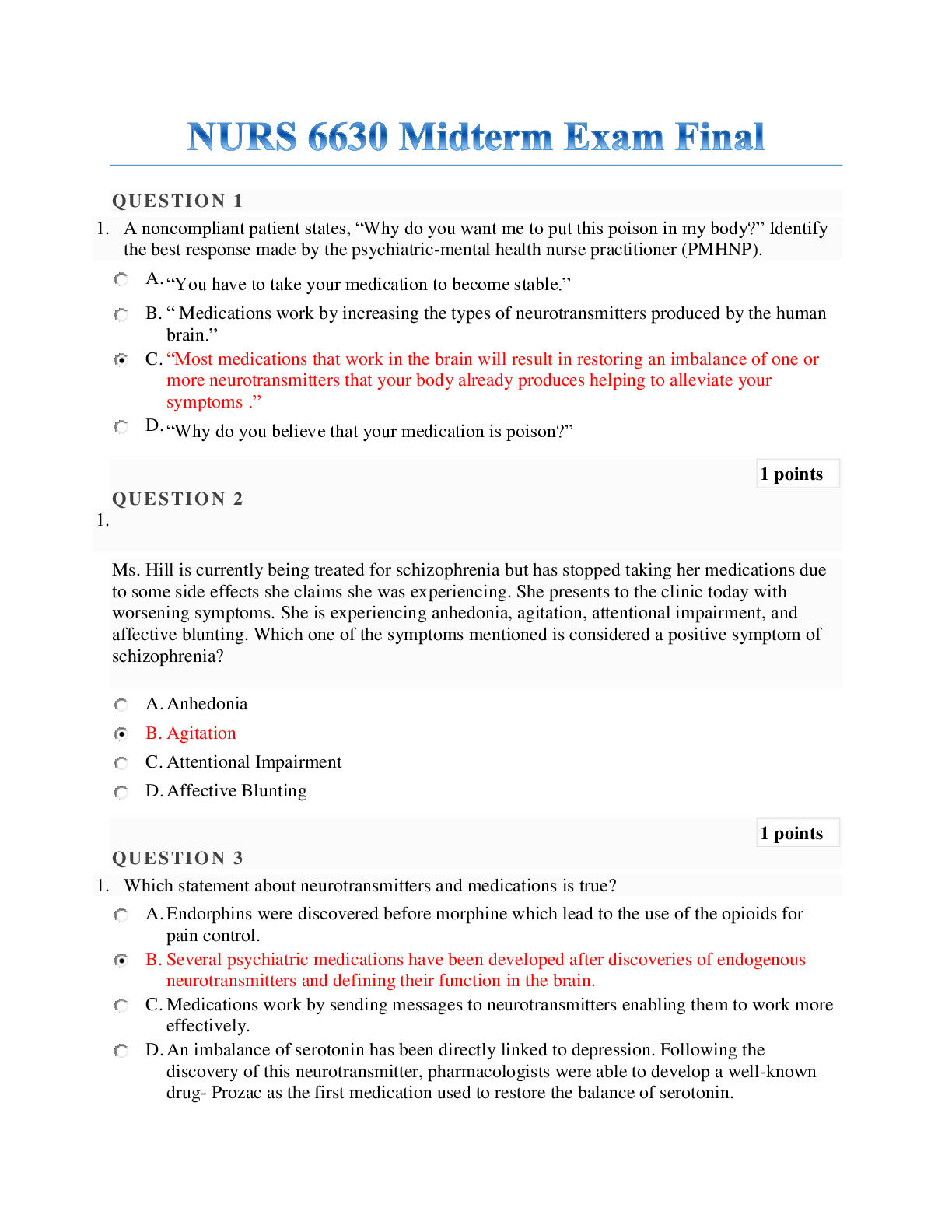NUR 634 Midterm Exam - Questions, Answers and Feedback
Document Content and Description Below
NUR 634 Midterm Exam - Questions, Answers and Feedback A 55-year-old smoker complains of chest pain and gestures with a closed fist over her sternum to describe it. Which of the following diagnoses ... should you consider because of her gesture? A. Bronchitis B. Costochondritis C. Pericarditis D. Angina pectoris Feedback: The clenched fist of Levine's sign, while not completely specific for ischemic pain, should definitely cause you to consider this etiology. Bronchitis is usually painless, and pericarditis can produce a sharp pain which worsens with inspiration. This is called pleuritic pain and can be associated with pneumonia and other chest diseases. Costochondritis is a parasternal pain, usually well localized. It is exquisitely tender Retinal detachment may be associated with all of the following EXCEPT: A. painless, unilateral loss in vision B. Spontaneous recovery C. Flashes of light D. Context of trauma Optic neuritis may be associated with all the following conditions EXCEPT: A. Sudden, painful loss in unilateral vision B. Associated with autoimmune disease C. Early sign of multiple sclerosis D. Common incidental finding on fundoscopic exam Mrs. Fletcher comes to your office with unilateral pain during chewing, which is chronic. She does not have facial tenderness or tenderness of the scalp. Which of the following is the most likely cause of her pain? A. Trigeminal neuralgia B. Temporomandibular joint syndrome C. Temporal arteritis D. Tumor of the mandible Feedback: Temporomandibular joint syndrome is a very common cause of pain with chewing. Ischemic pain with chewing, or jaw claudication, can occur with temporal arteritis, but the lack of tenderness of the scalp overlying the artery makes this less likely. Trigeminal neuralgia can be associated with extreme tenderness over the branches of the trigeminal nerve. While a tumor of the mandible is possible, is it much less likely than the other choices. An 8-year-old girl comes with her mother for evaluation of hair loss. She denies pulling or twisting her hair, and her mother has not noted this behavior at all. She does not put her hair in braids. On physical examination, you note a clearly demarcated, round patch of hair loss without visible scaling or inflammation. There are no hair shafts visible. Based on this description, what is your most likely diagnosis? A. Alopecia areata B. Trichotillomania C. Tinea capitis D. Traction alopecia Feedback: This is a typical description for alopecia areata. There are no risk factors for trichotillomania or for traction alopecia. The physical examination is not consistent with tinea capitis because the skin is intact. A 46-year-old former salesman presents to the ER, complaining of black stools for the past few weeks. His past medical history is significant for cirrhosis. He has gained weight recently, especially around his abdomen. He has smoked two packs of cigarettes a day for 30 years and has drunk approximately 10 alcoholic beverages a day for 25 years. He has used IV heroin and smoked crack in the past. He denies any recent use. He is currently unemployed and has never been married. On examination you find a man appearing older than his stated age. His skin has a yellowish tint and he is thin, with a prominent abdomen. You note multiple "spider angiomas" at the base of his neck. Otherwise, his heart and lung examinations are normal. On inspection he has dilated veins around his umbilicus. Increased bowel sounds are heard during auscultation. Palpation reveals diffuse tenderness that is more severe in the epigastric area. His liver is small and hard to palpation and he has a positive fluid wave. He is positive for occult blood on his rectal examination. What cause of black stools most likely describes his symptoms and signs? A. Infectious diarrhea B. Mallory-Weiss tear C. Esophageal varices D. Ulcerative colitis Varices are often found in alcoholic patients, but only when they have a diagnosis of significant cirrhosis. This patient has symptoms of cirrhosis, including jaundice, ascites, spider hemangiomas, and dilated veins on his abdomen (caput medusa). You are beginning the examination of the skin on a 25-year-old teacher. You have previously elicited that she came to the office for evaluation of fatigue, weight gain, and hair loss. You strongly suspect that she has hypothyroidism. What is the expected moisture and texture of the skin of a patient with hypothyroidism? A. Moist and smooth B. Moist and rough C. Dry and smooth D. Dry and rough 42-year-old florist comes to your office, complaining of chronic constipation for the last 6 months. She has had no nausea, vomiting, or diarrhea and no abdominal pain or cramping. She denies any recent illnesses or injuries. She denies any changes to her diet or exercise program. She is on no new medications. During the review of systems you note that she has felt fatigued, had some weight gain, has irregular periods, and has cold intolerance. Her past medical history is significant for one vaginal delivery and two cesarean sections. She is married, has three children, and owns a flower shop. She denies tobacco, alcohol, or drug use. Her mother has type 2 diabetes and her father has coronary artery disease. There is no family history of cancers. On examination she appears her stated age. Her vital signs are normal. Her head, eyes, ears, nose, throat, and neck examinations are normal. Her cardiac, lung, and abdominal examinations are also unremarkable. Her rectal occult blood test is negative. Her deep tendon reflexes are delayed in response to a blow with the hammer, especially the Achilles tendons. What is the best choice for the cause of her constipation? A. Large bowel obstruction B. Irritable bowel syndrome C. Rectal cancer D. Hypothyroidism COPD is associated with what on physical exam? increase in A/P diameter A daycare worker presents to your office with jaundice. She denies IV drug use, blood transfusion, and travel and has not been sexually active for the past 10 months. Which type of hepatitis is most likely? A. Hepatitis A B. Hepatitis B C. Hepatitis C D. Hepatitis D Feedback: The lack of contact with blood and body fluids makes hepatitis B, C, and D unlikely. She regularly changes the diapers of her clients and is at risk for hepatitis A. Vaccine against hepatitis A is recommended for daycare workers A young man comes to you with an extremely pruritic rash over his knees and elbows which has come and gone for several years. It seems to be worse in the winter and improves with some sun exposure. On examination, you notice scabbing and crusting with some silvery scale, and you are observant enough to notice small "pits" in his nails. What would account for these findings? [Show More]
Last updated: 1 year ago
Preview 1 out of 55 pages
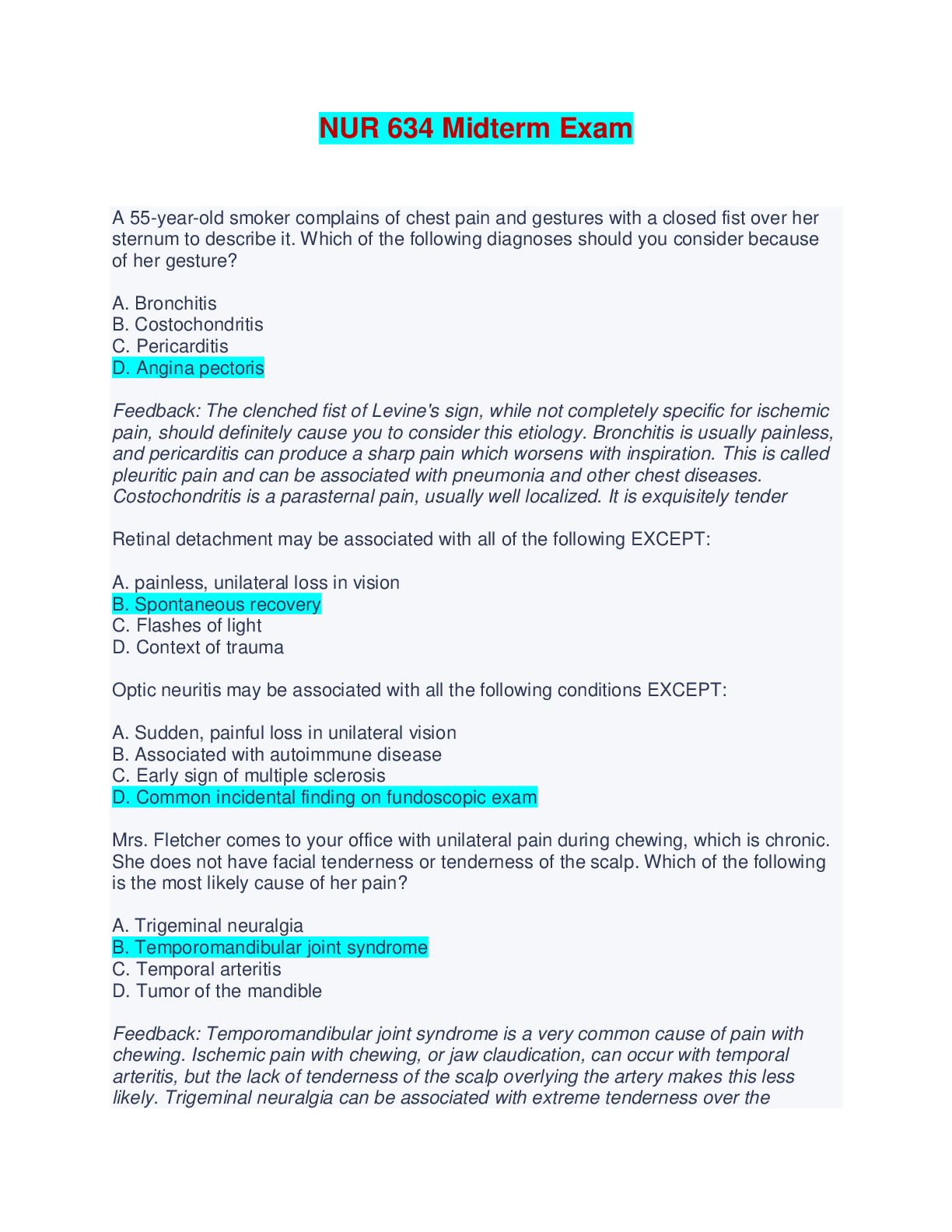
Buy this document to get the full access instantly
Instant Download Access after purchase
Buy NowInstant download
We Accept:

Reviews( 0 )
$18.00
Can't find what you want? Try our AI powered Search
Document information
Connected school, study & course
About the document
Uploaded On
Dec 20, 2023
Number of pages
55
Written in
Additional information
This document has been written for:
Uploaded
Dec 20, 2023
Downloads
0
Views
31

